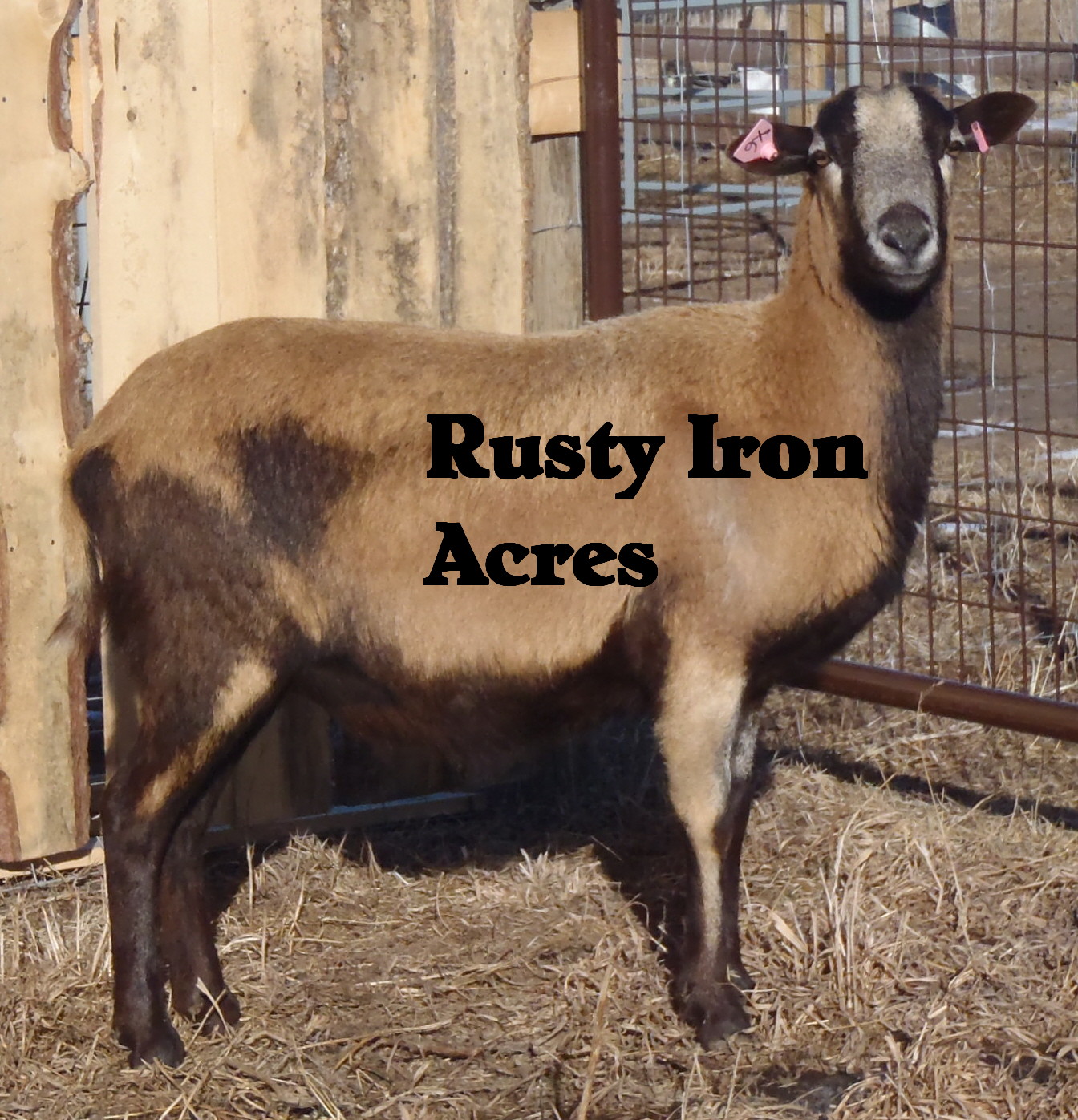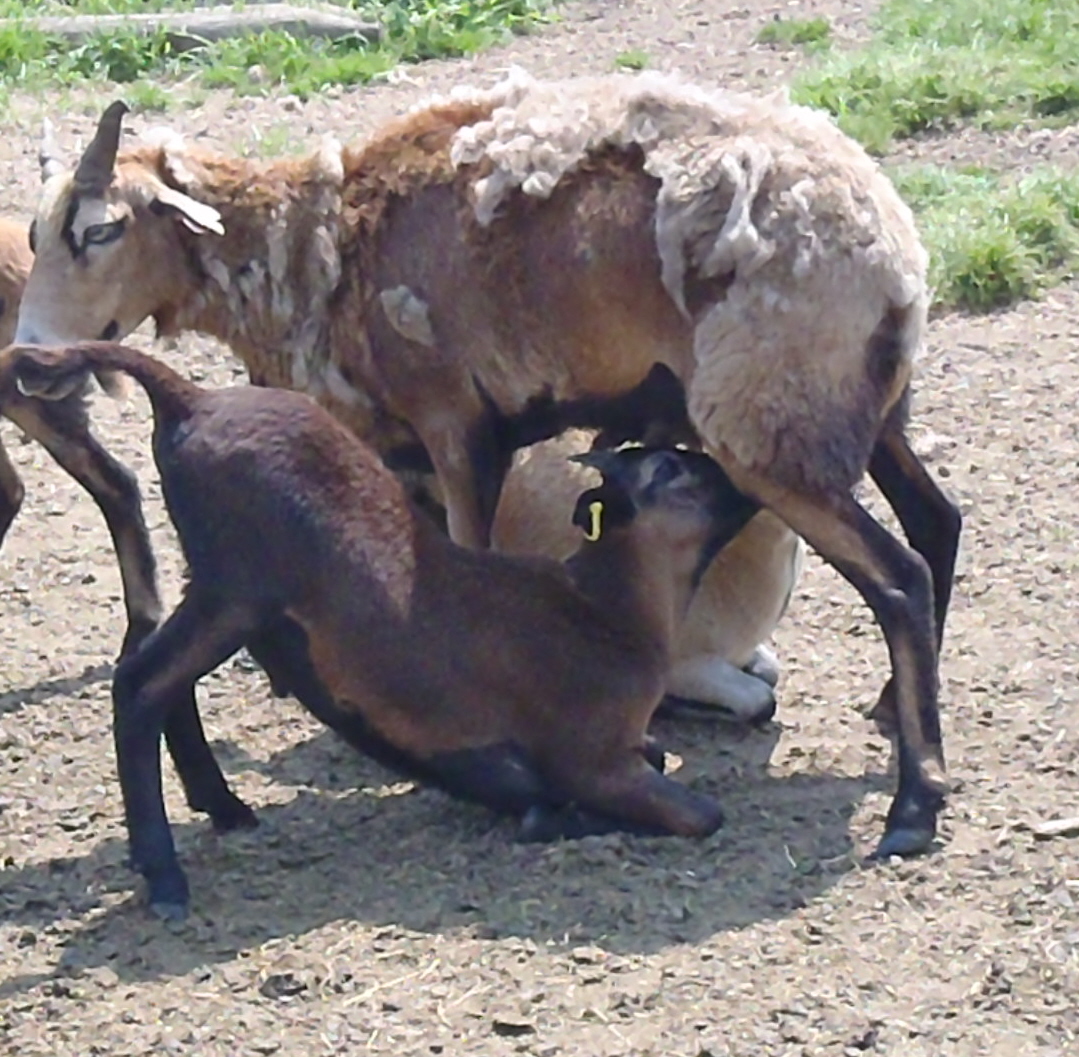
About American Blackbelly Sheep:
The American Blackbelly sheep is a hair sheep, originally developed by crossbreeding programs involving primarily Mouflon and Barbados Blackbelly. Resulting hybrids produced poor horn growth that interfered with the animals' faces. Repeated back crossing on the Mouflon improved horn growth to the extent that the hybrid attracted the attention of trophy hunters. Eventually, a strain of exotic looking animals with massive horns evolved and came to be referred to as "Corsican" in reference to the origin of the Mouflon ancestors. The original cross has subsequently been developed into several distinctive breeds of hair sheep. The American Blackbelly is a breed that is readily identifiable by a very well-defined coat pattern and is registered by the Barbados Blackbelly Sheep Association International (BBSAI). Rams generally display spectacular horns (must have horns to meet breed standard), while ewes may or may not be polled (hornless.) Our ewe flock is about 50/50 polled/horned. We have rams and genetics ranging from heavy tight curled horns to those with wide sweeping horns.
Mature ewes will range from 90-125 lbs and mature rams wil range from 90-200+ lbs. Lambs at birth will typically weigh 7-10 lbs.
American Blackbellies sport a distinctive hair coat in a range of tan to brown to red, with dramatic black markings.
The American Blackbelly is a efficient, energetic, small- to medium-sized sheep with a strong flocking instinct. Because of this trait, American Blackbelly sheep are excellent for training cutting horses and herding dogs. It is well adapted to a broad range of environments, breeding goals, and management styles. On the farm, it is desired for its productivity and thriftiness, great prolificacy, and fairly low maintenance. Mature ewes generally have two to three or more lambs in any season, and depending on management, are capable of lambing three times in two years. Twins are ideal and any more lambs than two/ewe is discouraged (to ensure adequate milk supply). They are very good mothers, producing good quantities of milk, bonding well with their lambs, and lambing with minimal problems (and intervention) . Because of their potential reproductive capacity and out-of-season breeding, ewes are suited to an accelerated lambing program. We typically aim to lamb once/year in early April/May. In a typical lambing year, we achieve close to a 200% success rate (lambs to market). In recent years we experienced 30%+ in triplets.
The sheep have very strong/hard hooves, meaning foot rot is rarely encountered, and hoof trimming is not frequently required. We have never seen foot rot in our stock.
American Blackbelly sheep will grow more or less winter wool, mostly in response to local winter conditions, which is entirely shed in spring/summer to reveal a coarse, flat hair coat with distinctive, antelope-like markings. It is never docked or sheared. Here's an example of a ewe shedding her winter coat, revealing her short sleek summer coat. Ewes that are pregnant or nursing are the last to shed. Ewes/lambs that are open are the first to shed in the spring.

As American Blackbelly Sheep are hair sheep (have no wool and therefore very litttle lanolin) to taint the flavor of the meat, this ensures that Blackbelly lamb rarely tastes "muttony." Blackbelly lamb is an exceptionally mild-flavored, lean meat that will please even those folks who say they don't like lamb. It tastes very similar to Mountain Sheep.
Click here for a description of the BBSAI breed standards http://www.blackbellysheep.org/abstandards.html